By Pamela Nielsen
SANTIAGO, Dominican Republic — There’s nothing like on-the-scene, first-hand experience.
Just ask the members of the LCMS Board for International Mission, who devoted four days (Feb. 22-26) in the Dominican Republic to learning from the LCMS mission team serving in the country about their witness, mercy and life together. The board’s unique experience culminated with its Feb. 26 meeting here.
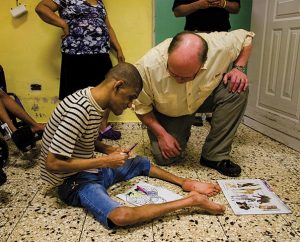
“Mission is messy … [and] we want to give you a picture of what missionary life looks like. We think it’s important for a board that sets policies,” said LCMS Regional Director for Latin and Caribbean America Rev. Ted Krey, who was joined by senior missionary staff members Danelle Putnam and James and Christel Neuendorf, as they laid the foundation for what the board would experience.
“The first missionaries [here] began with nothing,” said Krey, describing the work that began in the Dominican Republic only eight years ago. He called it the “front end of mission work.”
From the start, he said, mercy work has been performed alongside the Word and Sacrament in a partnership with Bethesda Lutheran Communities, LCMS mission and mercy ministries, the Lutheran Women’s Missionary League, LCMS districts and congregations, Concordia Seminary Argentina and the Evangelical Lutheran Church of Brazil (IELB).
The team, which began with Danelle Putnam and a single pastor from the IELB, now includes a pastor, Dominican seminarians, teachers, two vicars, a deaconess intern and several laypeople — an engineer, business manager and communications specialists from four countries, including the United States.
Efforts are focused on working with marginalized populations by establishing “mercy houses” (human-care outreach or programs) alongside a congregation.
“In starting this church and building it up, we didn’t expect to learn these things — one is [that by] reaching out to people with disabilities, it becomes part of the DNA of the new Christians,” said Putnam. “When they see someone with a disability they realize what they have and want to share it.”
Mission work’s process
Krey spoke about the process of mission work, beginning with the initial contact of bringing Christ to the nations. “It is a million and one things, ”he said. “It could be offering English as a foreign language, giving food or teaching theological-education classes. It could be helping people with legal documents or other mercy care,” Krey said. “It’s throwing out the seed, the net, as we go about extending Christ to the nations.”
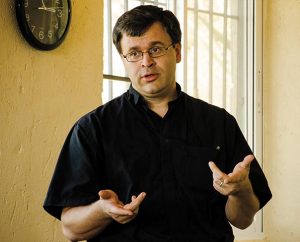
“It takes a while to really learn what the culture needs,” Neuendorf told the board. “It takes something like five years to get a missionary up to full speed, It’s a big investment. … You learn it by doing it, with experienced missionaries.”
“The work of the missionary changes over time, according to the needs,” explained Putnam. ”It takes long, sustained missionary work, the Word taking effect over time, in hearts.”
“We now know that it takes about 75 years, it’s multigenerational,” said Krey, referring to past LCMS work in Brazil, Argentina and Venezuela, where LCMS missionaries worked for more than 70 years. “We are talking about setting down roots and becoming part of the fabric of the community. Where this happens, as we baptize, the family is created, where the body of Christ is received, the family is nurtured. Where we console and care for our neighbor, there community is formed.”
The board listened intently as the missionaries also provided an honest description of the loneliness and challenges unique to their vocation and the chief reasons a missionary might choose to come off the field prematurely. They discussed the need for the BIM and the church as a whole to intentionally care for missionaries.
Visiting mission sites
The BIM visited church plants and mercy houses, including an adult orphanage for the mentally and physically disabled, a Lutheran school, a group home for disabled children and the newly dedicated seminary. In each place, board members had the opportunity to hear about the work, meet the people of God in that place and ask questions in preparation for their policy-setting meeting.
The Rev. Bernie Seter, board chairman, opened the BIM meeting and gave the floor to Krey, who made a theological presentation.
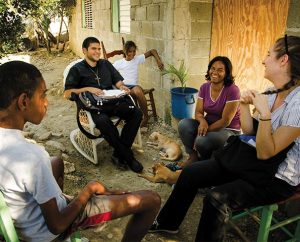
“ ‘Lutheran missions lead to Lutheran churches’ will not happen unless we know who we are and are intentional about it,” said Krey, commenting on the phrase that has come to define the LCMS mission focus — both nationally and internationally.
The BIM discussed the importance of providing the best theological training for LCMS partner churches and considered several models for doing so.
“We’ve taken a course change internationally … . Theological education by extension is not what our partners want and it has not been effective, especially in South America, when compared with the results where the Synod has helped form and support seminaries with our partner churches,” said Harrison. “We have to take the best of what we have and give it to our partners overseas. This is not about a short-term gain; it’s about training pastors well. But more than that, as you’ve spent time with Ted, you’ve seen it’s more than pastors,” said Harrison, referring to the other church workers and lay men and women who are vital to LCMS mission efforts around the world.
The Rev. Randall Golter, executive director of the Office of International Mission (OIM), reviewed recent staffing and strategy changes that will enable the OIM to move forward in line with the Synod’s mission priorities adopted at the 2013 Synod convention. To read about those priorities, click here.
Growing churches
The Rev. Dr. Albert B. Collver, LCMS director of Church Relations and new director of Regional Operations for the OIM, addressed the growth of the church in the Global South (particularly in Africa), as he reflected on his and Harrison’s recent visit to seven African countries.
“In Ethiopia, they start a new congregation each week,” said Collver. “We have entered formal theological discussions [with their leadership] that will last for years,” said Collver, who went on to survey the mission and church-partner landscape in each of five world regions.

The blessings and challenges of short-term mission teams generated a beneficial discussion. Among the challenges is the fact that often these teams do not continue to support the work on the field or have further contact with the missionaries once they return home — something the missionaries greatly desire. The board discussed the need for evaluation and the creation of new guidelines for LCMS volunteer mission teams.
The BIM heard the strategic plan set by the OIM staff and discussed how it dovetails with Synod mission priorities and convention mandates. Chief among the priorities are recruitment and missionary care — given the 2013 convention charge to double the number of career missionaries by the time of the 2016 convention.
Across the globe, the OIM is consolidating mission staff in order to create and place mission teams in close proximity to Lutheran Word and Sacrament. No longer will a missionary be placed alone in a country or region where he or she cannot be nurtured and cared for both spiritually and physically. Given the present level of LCMS career and short-term missionaries, this will require ceasing work in some areas, in order to strengthen it in others.
“We had to pick and choose where we could consolidate and focus our resources for greatest impact at this moment,” Collver said. “Our regional directors have told us we need to consolidate.”
Referring to the earlier presentation by Krey on the importance of a missionary team gathered around the Word and Sacrament, Collver explained the “new” approach, one that, as he noted, was the model employed for many years in the early days of LCMS mission work.
“In the more recent past,” Collver said, “we sent a short-term missionary, committed to service for one to two years, to a far place where there was no pastor, no church, no team.”
Collver pointed out that burnout and fatigue resulted. When the disheartened missionary left the field, there was no church community remaining to carry on the work.
The board also discussed how LCMS mission efforts might enhance or harm partner-church relations. Debate ensued about the status of work in East Asia and different approaches to mission work in closed countries.
Measuring success
The future mission strategy — influenced by the document titled “A Theological Statement for Mission in the 21st Century (Draft)” — was presented and discussed. The success of this strategy will be measured by the Word-and-Sacrament activities that lead to church planting, using a multifaceted metric to help determine healthy and responsible Lutheran churches, as outlined in the document “Ecclesiology, Mission and Partner Relations.”
Board action included the calling of 16 new missionaries, budget and policy review, and refinement and adoption of the document titled “A Theological Statement for Mission in the 21st Century.”
The Rev. Dr. Doug Rutt, International Ministry director for Lutheran Hour Ministries, was a guest at the meeting. As directed by the Synod convention, a standing invitation was extended for representatives of LHM and the Lutheran Women’s Missionary League to attend future BIM meetings.
“I believe it’s clear to you that … we have come through a tremendous time of transition, and it’s also clear we’ve … made tremendous strides,” said Harrison. “As we move forward, we wanted to come here so you could see what church planting should and can be worldwide. The task involves pastors and commissioned workers, laypeople, men and women, all valued and working hand in hand. And it involves recognizing and encouraging and empowering local leadership — pastors, laypeople, as you see so clearly here in the Dominican. And it’s all about witness, mercy and life together in Christ.”
Deaconess Pamela Nielsen is associate executive director of LCMS Communications.
Posted March 27, 2014


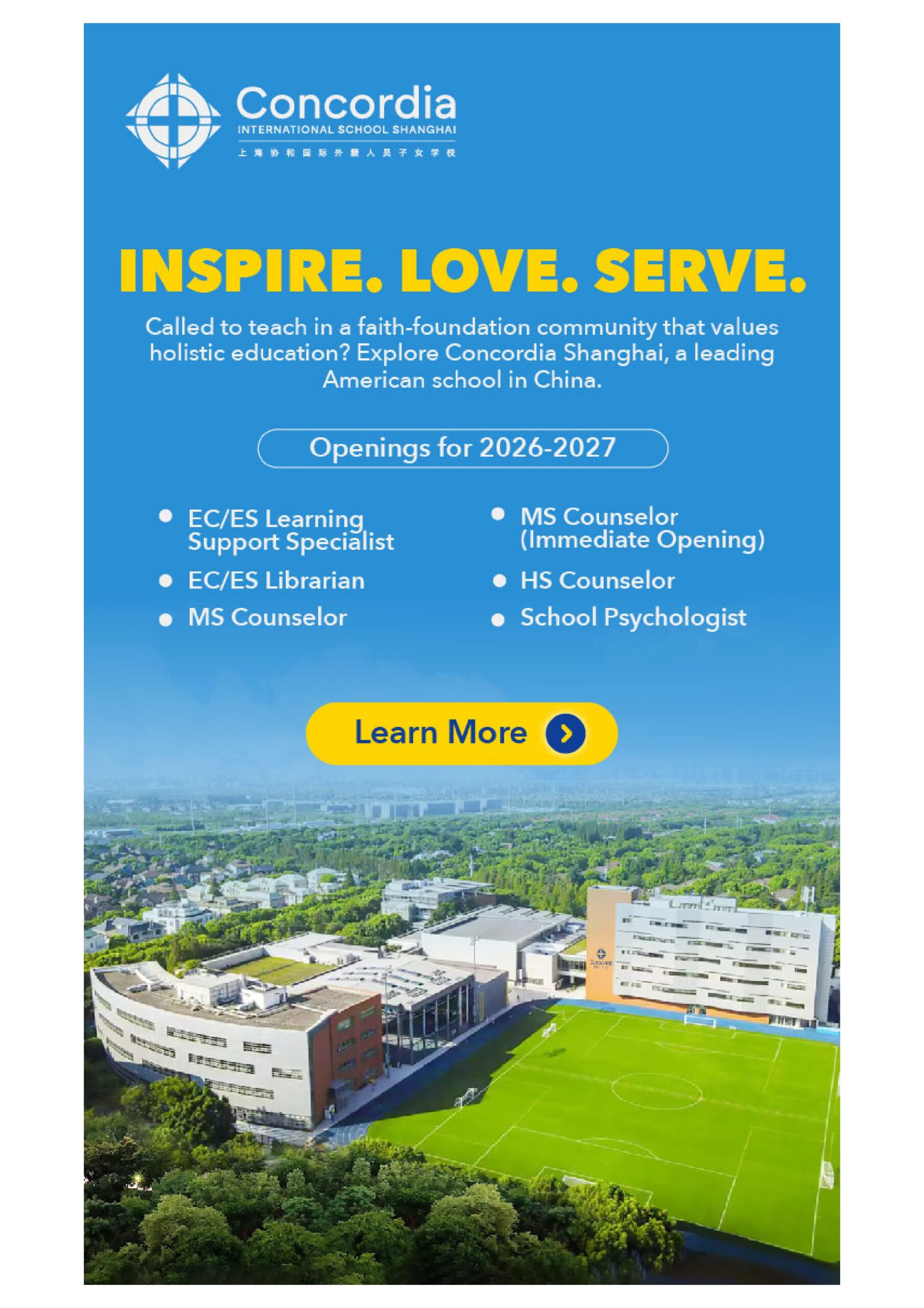

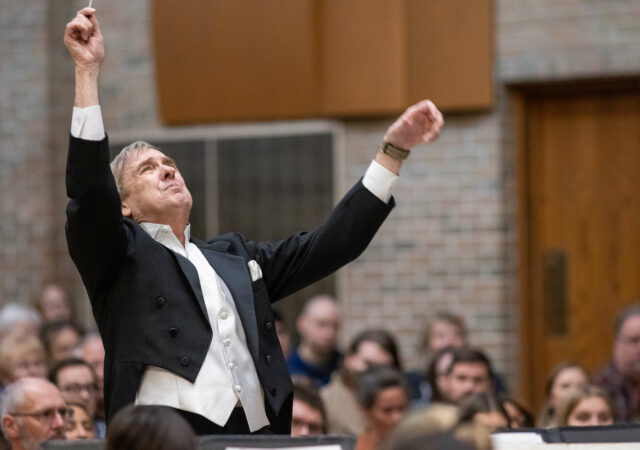
As a former LCMS missionary of 20 years, I see that you continue making the same mistakes which were made for the past 100 years of LCMS’s mission programs. You continue to operate from a ‘top down’ management model rather than allowing the field to direct the mission strategies and methodologies. It would serve you well to interview some of the former missionaries who witnessed the failure of the LCMS mission programs. Learn from your mistakes or you will re-visit those mistakes.
Sincerely
Bill Timmons
Lutheran Philippine Mission
Lutheran Mission in Thailand
It is important to know that all of our strategic plans are set on the fields by our missionaries and also sister churchers. Ask our missionaries.
Blessings in Christ,
Ted Krey
Regional Director for Latin America and the Caribbean